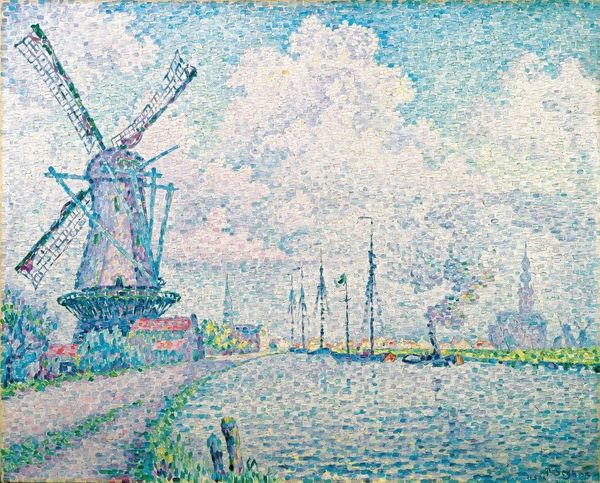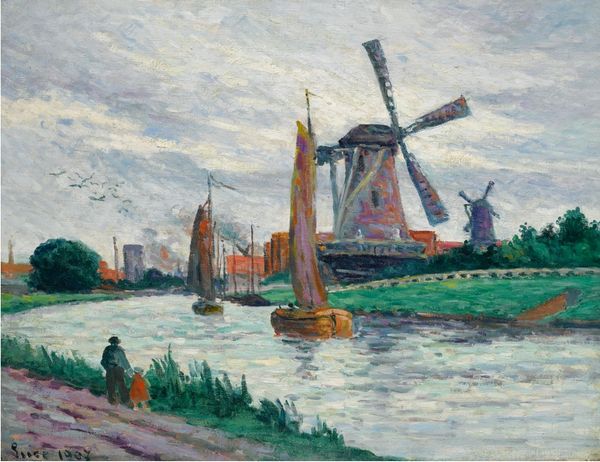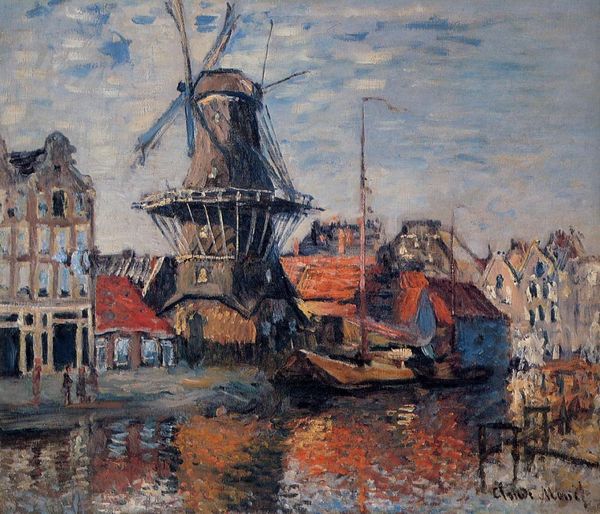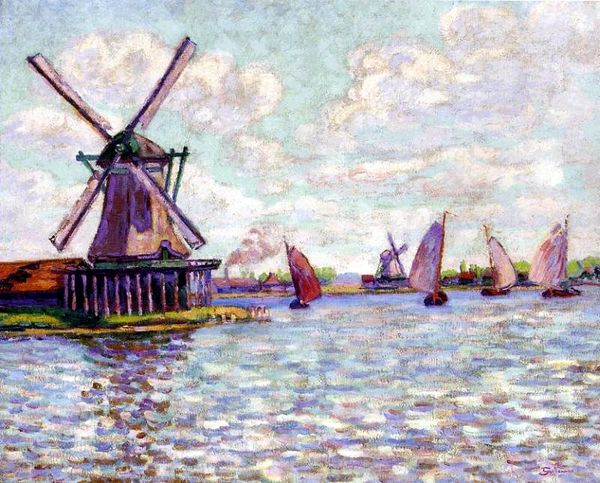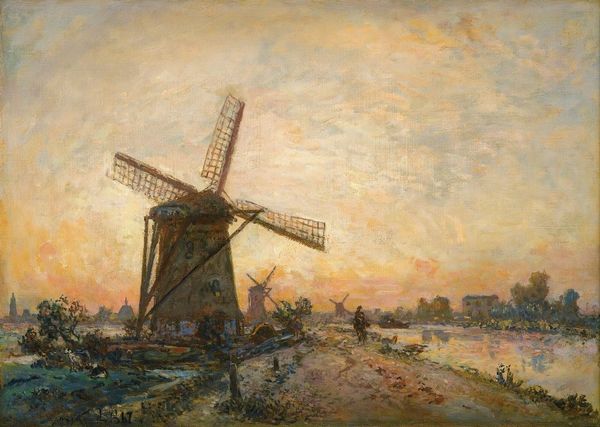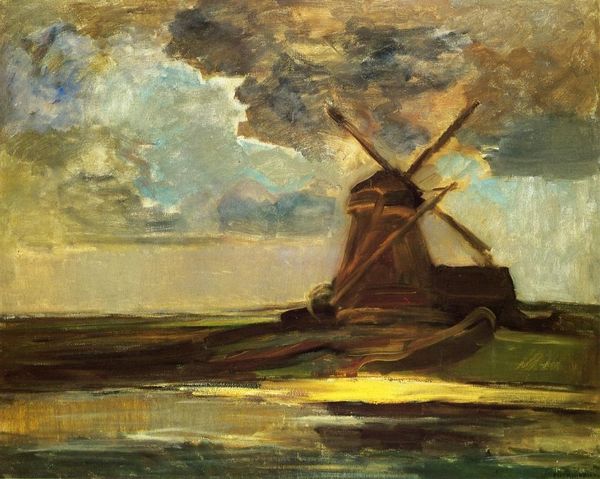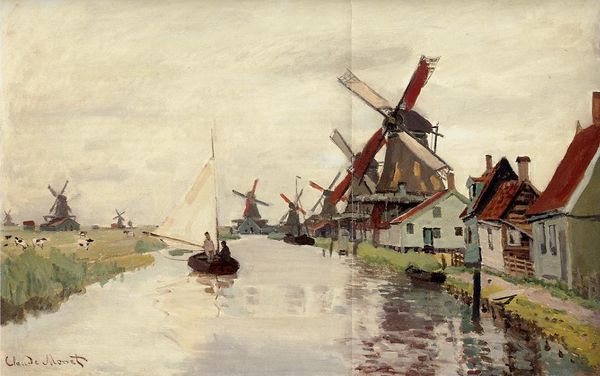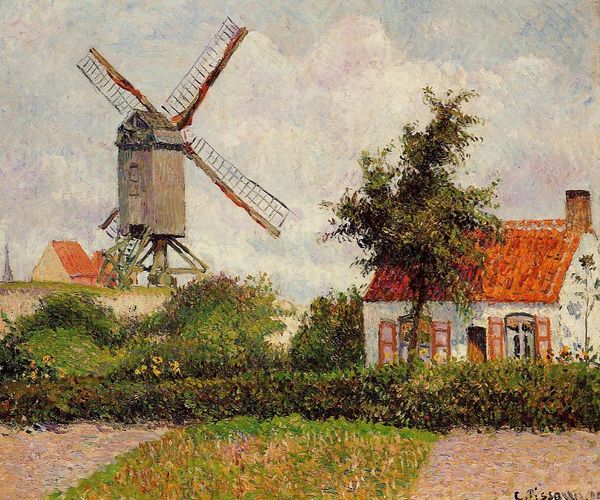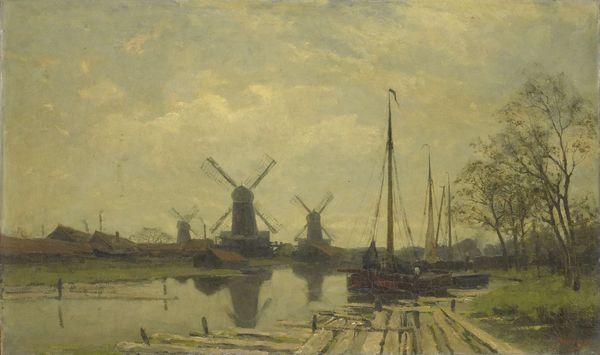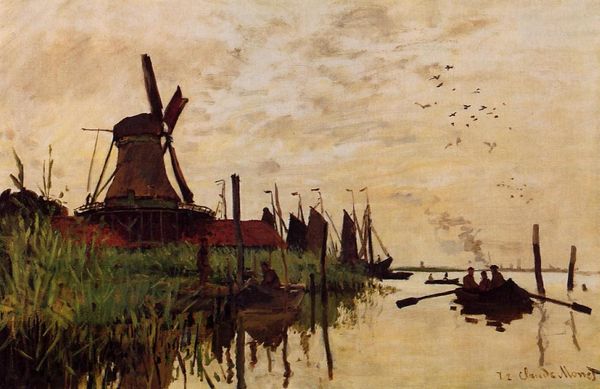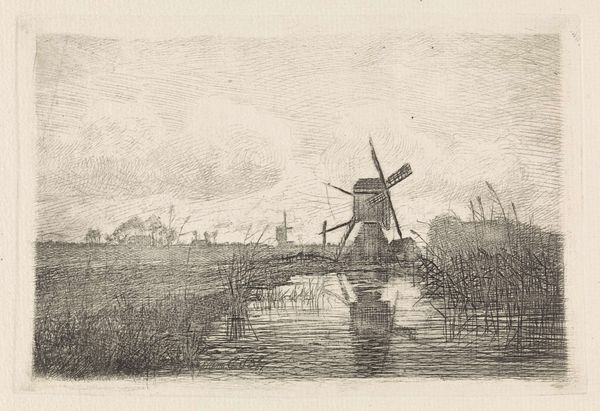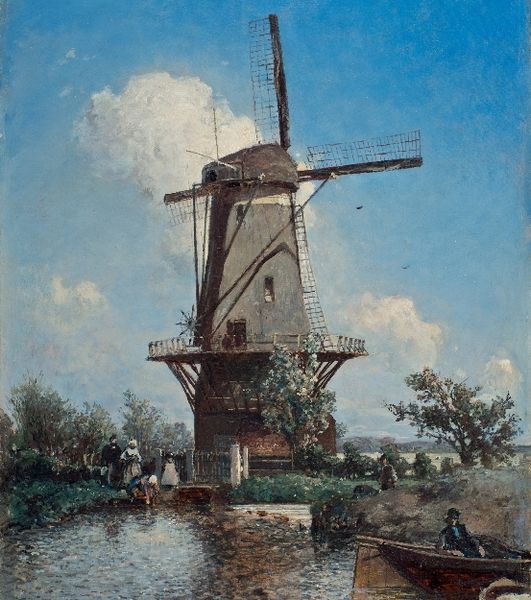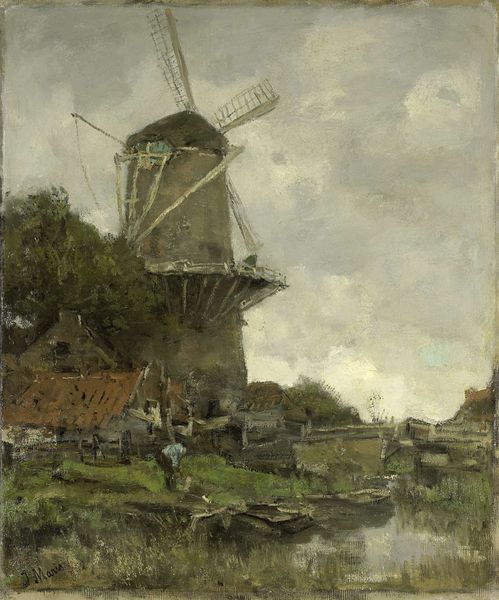
painting, oil-paint
#
painting
#
oil-paint
#
landscape
#
impressionist landscape
#
cityscape
#
post-impressionism
Dimensions: 73 x 92 cm
Copyright: Public domain
Editor: So, this is Paul Signac's "Dutch Mill at Edam" from 1898, oil on canvas. It's incredibly detailed, but from a distance, it almost dissolves into a haze. The composition really emphasizes the windmill's height against what seems like a pastel sky. What do you see in this piece, looking closely at its structure? Curator: Indeed, the verticality is crucial. Note how Signac has structured the composition around a central vertical axis—the windmill itself—that dominates the visual field. Observe the carefully calibrated distribution of color; the pointillist technique fragments light into discrete touches. Are the colors arbitrary, or is there an organizing principle at play? Editor: I see, there’s a definite shift. The lower portion has darker blues and greens, which transitions into warmer yellows and pinks higher up. It’s almost like an atmospheric perspective created entirely through color. So, form is really secondary to the color, then? Curator: I suggest reconsidering the premise that form and color exist independently. Signac’s mastery resides in his synthesis of the two. Each dab of pigment is itself a micro-form, and collectively, they constitute the larger shapes. The painting explores how form emerges from the interaction of color. Consider the subtle gradations around the edges—do they soften the geometry, or reinforce it? Editor: That’s a good point; I hadn't thought about the brushstrokes themselves *being* forms. I guess focusing on the interaction clarifies his methodology and its effect. Curator: Precisely! And in grasping this we can perhaps better appreciate the work’s structural rigor. This rigorous construction generates visual harmony, in what might initially appear chaotic or merely decorative. Editor: That’s been very helpful. Seeing how the brushstrokes build form, instead of just describing color, totally changes how I understand the piece. Curator: Indeed. Art's transformative potential lies in seeing not just what is represented but how the artist arrives at the representation, and that can only begin with our analysis.
Comments
No comments
Be the first to comment and join the conversation on the ultimate creative platform.
